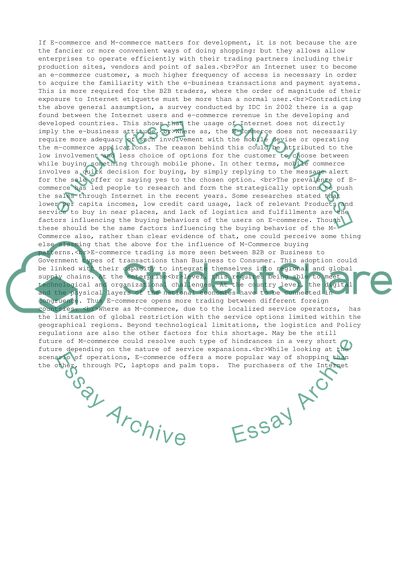Cite this document
(“E-commerce and M-commerce Essay Example | Topics and Well Written Essays - 3000 words”, n.d.)
E-commerce and M-commerce Essay Example | Topics and Well Written Essays - 3000 words. Retrieved from https://studentshare.org/business/1510363-e-commerce-and-m-commerce
E-commerce and M-commerce Essay Example | Topics and Well Written Essays - 3000 words. Retrieved from https://studentshare.org/business/1510363-e-commerce-and-m-commerce
(E-Commerce and M-Commerce Essay Example | Topics and Well Written Essays - 3000 Words)
E-Commerce and M-Commerce Essay Example | Topics and Well Written Essays - 3000 Words. https://studentshare.org/business/1510363-e-commerce-and-m-commerce.
E-Commerce and M-Commerce Essay Example | Topics and Well Written Essays - 3000 Words. https://studentshare.org/business/1510363-e-commerce-and-m-commerce.
“E-Commerce and M-Commerce Essay Example | Topics and Well Written Essays - 3000 Words”, n.d. https://studentshare.org/business/1510363-e-commerce-and-m-commerce.


